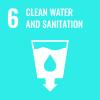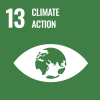Oromia, Southern Ethiopia, December 2022 – Over the past few years, Tume has seen the fruits of her family’s labour disappear in front of her eyes. Her country, Ethiopia, is in the grip of a devastating drought – the severest the country has seen in almost 40 years.
“The drought has taken away everything we had: our herd of cattle, oxen, donkeys, goats, and farmland – they are all gone,” the 78-year-old mother of four says.
“I’ve lived here for nearly eight decades and I’ve seen many things in my life. I used to fear nothing; this has changed that. It’s the worst drought I’ve seen in my entire life – it’s terrifying.”
Many regions in Ethiopia are currently experiencing one of the harshest droughts in decades, with nearly 10 million people in need of urgent food assistance.
Over 3.5 million livestock have died between the end of 2021 and May 2022, due to the drought’s adverse effects, which have destroyed the livelihoods of millions. Hundreds of thousands of people have migrated in search of water, pasture, and urgent assistance.

Over 40,000 drought-displaced persons are currently staying at the Dubuluk IDP site in Borena zone, an area part of the Oromia Region of Ethiopia. Photo: IOM/Kaye Viray
Nestled in the southern part of the country, Borena zone, an area part of the Oromia Region of Ethiopia, is home to thousands of drought-displaced people that are staying on the Dubuluk Internally Displaced Persons (IDP) site which opened some months ago.
People have moved here in search of help, with access to water among the key needs. Tume is one of them.
“We used to live in an area that’s not too far from this site. We were never rich, but we worked hard to be able to lead a comfortable life. We had donkeys that helped us to fetch water. Now, the water source has dried out and all our donkeys have died – we knew we had no choice but to leave if we wanted to survive,” she says.


IOM has built emergency latrines and shower facilities at the Dubuluk IDP site and has rehabilitated hand pumps. Photo: IOM/Kaye Viray
This year, the International Organization for Migration (IOM) started providing water trucking support to provide a lifeline for IDPs. IOM trucks 40,000 litres of water each day to Dubuluk IDP site, which serves an estimated 5,300 people.
IOM’s water trucking system also supports eight other IDP sites across drought-affected regions in Ethiopia. The water mostly comes from a protected borehole recently rehabilitated by IOM. To ensure water quality standards during collection and storage, the chlorination process is performed right at the storage tank before distribution.
IOM’s Water, Sanitation and Hygiene (WASH) interventions are reinforced by strong hygiene promotion activities carried out by a team of trained volunteers, which aim to improve hygiene practices and lead to behavioural changes.

Water trucking services provide life-saving support for internally displaced persons. Photo: IOM/Kaye Viray
IOM coordinates its WASH services with the local district water administration in order to make sure those in hard-to-reach areas are also getting the type of support they need.
“While IOM’s water trucking support is essential, sustained solutions must be secured through the rehabilitation and construction of durable water supply systems,” explains Ester Ruiz de Azua, Emergency and Post-Crisis Programme Coordinator with IOM Ethiopia.
To further improve the living conditions on the IDP site, IOM has distributed water purification chemicals and has built emergency latrines and shower facilities, among other complementary initiatives.
To improve the lifespan of the site’s water supply system, hand pumps have been rehabilitated at two kebeles (districts) where water trucking is conducted.
“This drought is not slowing down anytime soon, but we must carry on living. The water we receive has saved my life, my children and grandchildren’s lives. I cannot afford to lose them too,” Tume says.

“This drought is not slowing down anytime soon, but we must carry on living.” – Tume Photo: IOM/Kaye Viray
IOM’s WASH response in drought-affected regions in Ethiopia is supported by USAID’s Bureau for Humanitarian Assistance (BHA) and EU Civil Protection and Humanitarian Aid (ECHO).
This story was written by Kaye Viray, Media and Communications Officer with IOM Ethiopia, kviray@iom.int.




